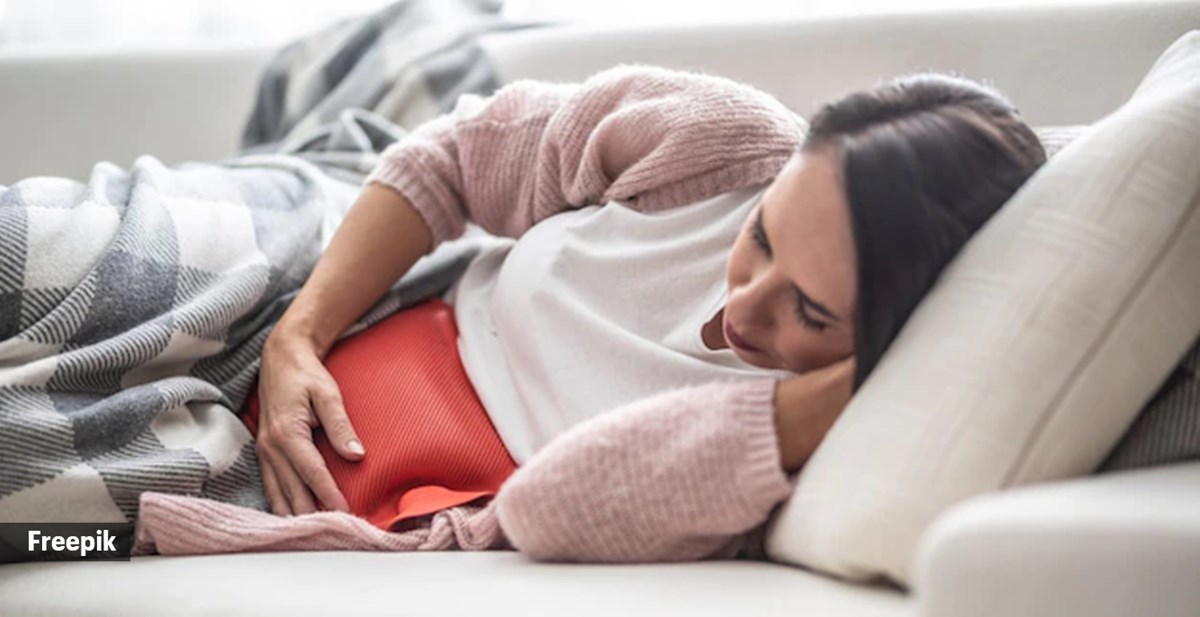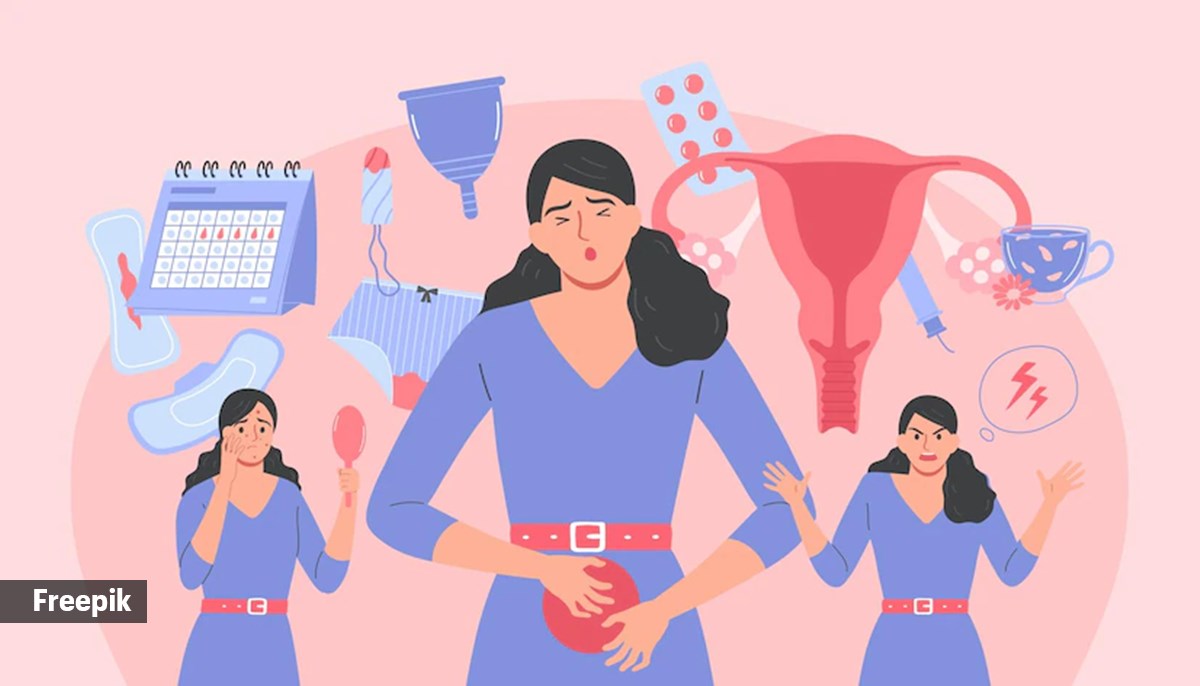📣 For more lifestyle news, click here to join our WhatsApp Channel and also follow us on Instagram
Understanding normal (and abnormal) period pain
You might feel that very painful periods are the norm. However, really bad menstrual cramps are not normal. Severe period cramps can signal an underlying problem. So, we turned to an expert to understand everything you need to know about period cramps and how to manage them.
 Menstruation occurs when the uterus sheds its lining once a month, and this process can cause some discomfort. (Source: Freepik)
Menstruation occurs when the uterus sheds its lining once a month, and this process can cause some discomfort. (Source: Freepik)As a menstruator, if you have never complained about the aches and pains of your period, you’re a rare individual. Period pain can be a constant source of frustration for many women. Despite all the conversations around the topic, most of us are not aware of what is considered normal and what’s not. Or what you can do to find much-needed relief.
You might feel that very painful periods are the norm. However, really bad menstrual cramps are not normal. Severe period cramps can signal an underlying problem. So, we turned to an expert to understand everything you need to know about period cramps and how to manage them.
According to Dr Anshumala Shukla Kulkarni, Head of Minimally Invasive Gynaecology, Gynaecology Laparoscopic and Robotic Surgery, Kokilaben Dhirubhai Ambani Hospital, Mumbai, menstruation occurs when the uterus sheds its lining once a month, and this process can cause some discomfort. While some amount of pain during periods is normal, excessive pain that causes you to miss work or classes is not and might indicate a health issue that needs to be addressed.
She noted that some discomfort and spasms, which last for a day is normal in periods, however any pain that gives a strong stabbing sensation, gets worse with time and lasts for more than two days is not normal.
Reasons behind pain and discomfort during periods
Explaining this, Dr Kulkarni said that period pain, also known as dysmenorrhea, can have several causes. “It might be primary dysmenorrhea, which occurs in individuals who experience pain before and during menstruation, or secondary dysmenorrhea, which arises if normal periods become painful later in life due to conditions affecting the uterus or other pelvic organs.”
These conditions can include endometriosis, uterine fibroids, premenstrual syndrome (PMS), pelvic inflammatory disease (PID), adenomyosis or cervical stenosis. A hormone called prostaglandin, which triggers muscle contractions in the uterus to expel the lining, can cause pain and inflammation, and its level rises right before menstruation begins.
How to manage pain during periods
 Use a heating pad on your pelvic area or back. (Source: Freepik)
Use a heating pad on your pelvic area or back. (Source: Freepik)
The gynaecologist explained that dietary food, which is heavy on processed items and sugars can cause increase in inflammation and pain. Meanwhile, a healthy fibre-rich diet with exercises, such as stretching, help reduce pain as they decrease congestion and inflammation.
Here are some lifestyle and dietary modifications that can help manage period pain, as per the expert:
*Using a heating pad on your pelvic area or back
*Lightly massaging your abdomen
*Taking a warm bath
*Doing regular physical exercise
*Eating light, nutritious meals
*Practicing relaxation techniques or yoga
*Taking anti-inflammatory medications before you expect your period — consult your doctor before taking any medication.
*Taking vitamins and supplements such as vitamin B-6, vitamin B-1, vitamin E, omega-3 fatty acids, calcium, and magnesium
*Raising your legs or lying with your knees bent
*Reducing your intake of salt, alcohol, caffeine and sugar to prevent bloating.
When should one visit a doctor?
Dr Kulkarni explained that if menstrual pain is interfering with your ability to perform basic tasks each month, then one should consult a doctor.
“Specific symptoms that should prompt a doctor’s visit include continuing pain after IUD placement, at least three painful menstrual periods, passing blood clots, cramping accompanied by diarrhoea and nausea, and pelvic pain when not menstruating,” she said. “Sudden cramping or pelvic pain could be signs of an infection. Extreme pain that interferes with daily activities and abnormal bleeding needs to be checked by gynaecologist. An untreated infection can cause scar tissue that damages the pelvic organs and may lead to infertility.”
Things to keep in mind
 Normally, a period cycle is 22 to 35 days and lasts anywhere between 2 to 7 days. (Source: Freepik)
Normally, a period cycle is 22 to 35 days and lasts anywhere between 2 to 7 days. (Source: Freepik)
The expert said that some people are at a higher risk of having painful periods, including those who are under the age of 20, have a family history of painful periods, smokers, or have heavy or irregular periods, and never had a baby or reached puberty before age.
“Normally, a period cycle is 22 to 35 days and lasts anywhere between 2 to 7 days. Usually, 2 to 3 pads a day is sufficient. Any deviation from this should not be ignored. It’s important to remember that while some discomfort during menstruation is normal, severe pain is not and should be evaluated by a doctor,” she added. “Lifestyle and dietary changes can help manage pain, but they should not replace a consultation with a doctor if you’re experiencing significant pain or any unusual symptoms.”
Dr Kulkarni concluded, “We should not dismiss period pain as normal for all. Pain caused due to inflammatory lesions like endometriosis can be quite debilitating and if not treated can damage ovaries, uterus, fallopian tubes and the bowel bladder along with causing intense mental health issues. Having period pain doesn’t mean the woman is high maintenance, don’t gaslight the symptoms and have it checked out by a gynaecologist.”
📣 For more lifestyle news, follow us on Instagram | Twitter | Facebook and don’t miss out on the latest updates!
📣 For more lifestyle news, click here to join our WhatsApp Channel and also follow us on Instagram



- 01
- 02
- 03
- 04
- 05
























